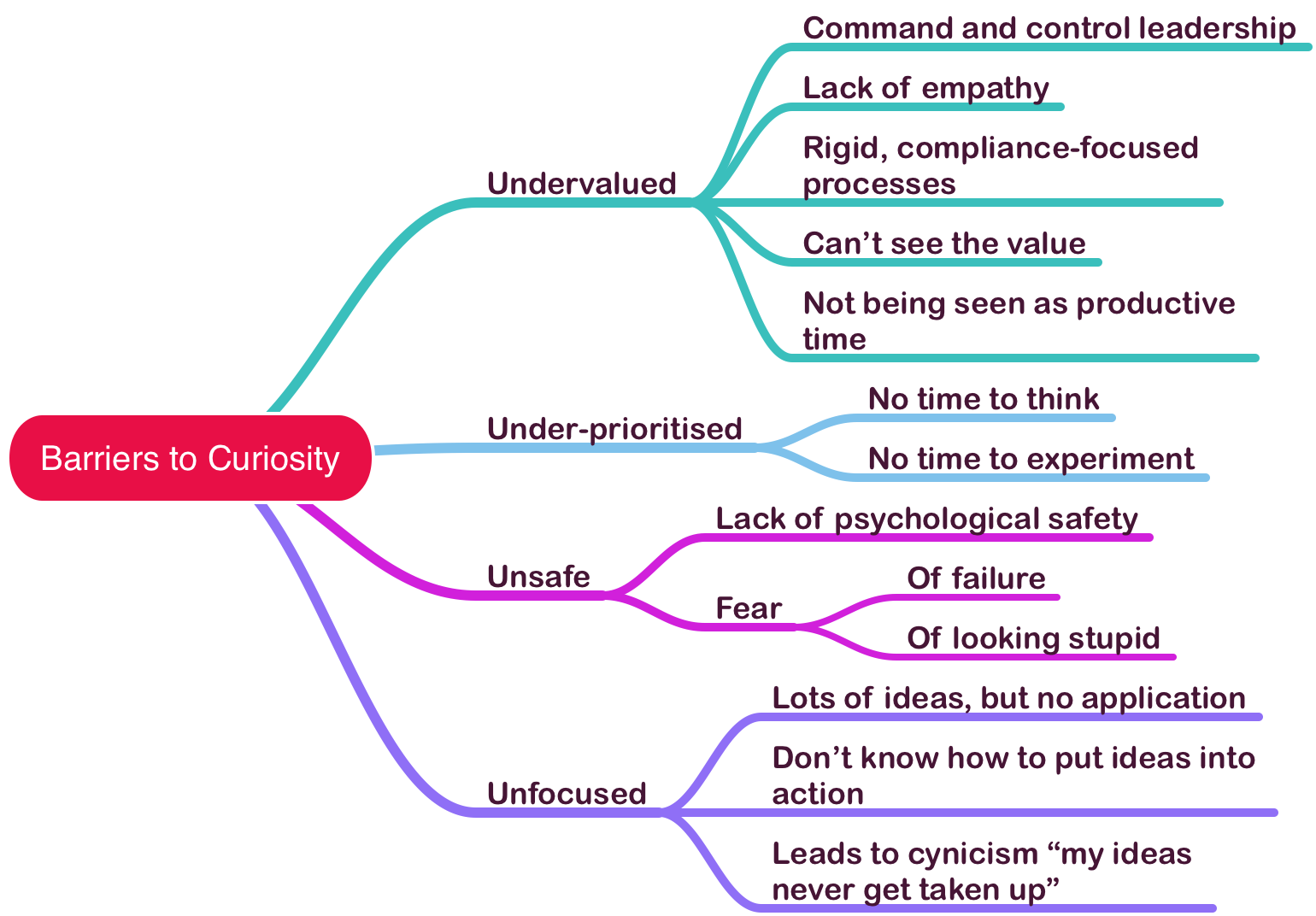
Cultivating Curiosity
22nd Mar 2018
How do you cultivate more curiosity at work?
I’ve discussed the importance of curiosity in a previous post. Now I’d like to dig into it a little more with you.
As curiosity trends toward becoming a highly valued commodity, I’ve been curious about what it takes to be more than a word on a wall in the organisational values chart. So, with my curious hat on, I set about seeking some answers:
- A few weeks ago, I polled my brains trust (aka my LinkedIn network) and asked them “what do you think the main barriers are to curiosity at work?”
- A couple of weeks ago, I ran a workshop on leading curiosity with about 50 leaders from a diverse range of organisations where we explored what it takes to create more curious cultures.
- And of course, I read my brains out trying to get a sense of what it takes to make curiosity happen at work, and why it matters.
Here’s what I’ve learned so far:
- Curiosity is the driving force behind creativity and innovation. If we want learning, and if we want to create change, we need to start by cultivating a sense of curiosity about a possible different and better future. That’s why it matters. The Merck Group has done some really useful research into what happens when you cultivate curiosity. In essence, the more curiosity, the more ideas, and the more chance of breakthroughs happening.
- Curiosity is what happens when there’s a perceived gap between what we think we know and what we think we could know. As humans, we naturally want to fill that gap. So to grow curiosity, we need to create that gap in the first place. In other words, pique interest, then encourage exploration.
- There are some big barriers to making curiosity happen. Let’s have a look at what my crew on LinkedIn said. I’ve summarised the comments into four categories:

Quite the list, right? Plenty of barriers to kill curiosity in its tracks.
Research by the Right Question Institute suggests that curiosity peaks in early childhood and then declines as we enter the formal school system. A young child asks 300 questions a day. By adulthood, the number is down to virtually none.
With this list, you can see why. If your organisation’s current culture has any of these elements in spades, you’ll be hard-pressed to cultivate a thriving culture of curiosity anytime soon.
So, how to cultivate curiosity? What does it take? I’ve dug up and shaped up a few ideas that will help answer those questions. Over the coming weeks, I’ll be exploring what it takes to cultivate a culture of curiosity, and sharing my thoughts here.
Curious about what else people said? You can check out the LinkedIn conversation here. Feel free to add your thoughts!
In the next post, we’ll look at the three stages of curious cultures.
Piqued your interest? Check out my Leading Curiosity workshop or get in touch for a chat.
Like this post? You’re only getting half the story. Sign up to my ‘Fresh Thinking’ newsletter, delivered monthly to your inbox.
Are you a Change Maker? Learn more about my Change Makers programme, including next intake dates.


2 thoughts on “Cultivating Curiosity”
Comments are closed.